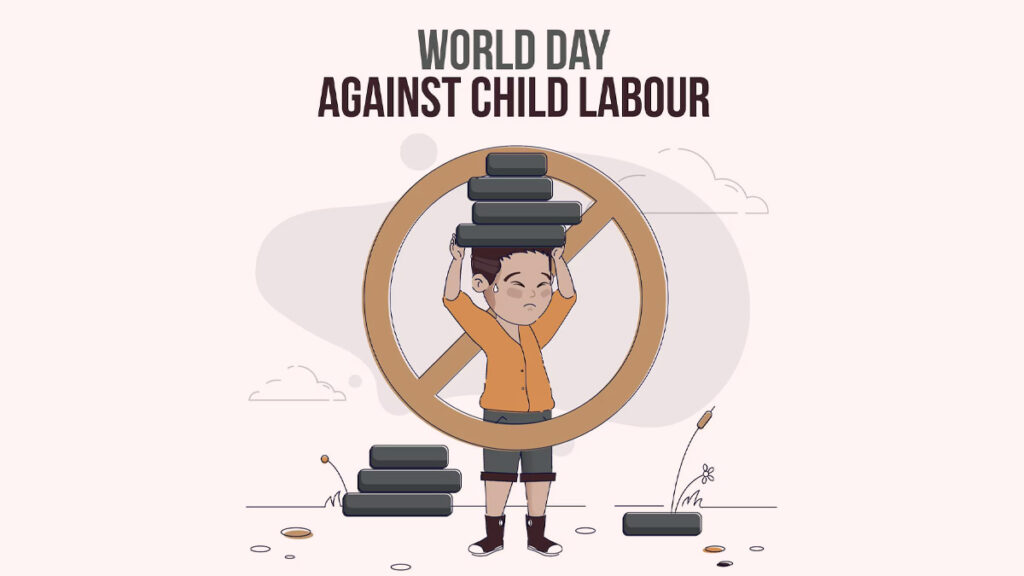Category: Social Issues | International Observance | Child Rights
Date Observed: June 12, 2025
Published by: IndianCurrentAffairs.com
📅 Introduction: A Global Stand for Children
Every year on June 12, the world comes together to observe World Day Against Child Labour—a day dedicated to raising awareness and intensifying the global fight to eliminate child labour in all its forms. In 2025, the focus of the campaign gains deeper relevance with the theme:
“Progress is clear, but there’s more to do: let’s speed up our efforts!”
This year’s theme is both a celebration of the strides made so far and a call to action—urging governments, organizations, and citizens to accelerate the progress as the 2025 deadline under Sustainable Development Goal (SDG) 8.7 rapidly approaches.
🌍 Understanding the Global Scenario
According to recent reports from the International Labour Organization (ILO) and UNICEF, nearly 160 million children—1 in 10 worldwide—are still engaged in child labour. While the number of children in hazardous jobs has declined slightly in the last five years, economic challenges, armed conflict, pandemics, and climate change continue to stall momentum.
Key Global Insights:
- Africa leads with the highest incidence, followed by Asia-Pacific.
- Agriculture, manufacturing, mining, and domestic work are the most child-labour-intensive sectors.
- The fastest-growing concern is urban informal labour and child trafficking.
🇮🇳 Child Labour in India: A Dual Story
India, with its massive youth population, has made measurable progress through legislative reforms and public awareness campaigns. However, child labour persists, particularly in:
- Rural areas with low literacy
- Unorganized sectors such as construction, street vending, and textiles
- Urban slums, where economic pressure forces families to send children to work
Key Government Initiatives:
- Child Labour (Prohibition and Regulation) Amendment Act, 2016
- National Child Labour Project (NCLP)
- School-based interventions under Samagra Shiksha Abhiyan
- Integration of rescued children into formal education
Despite these steps, enforcement remains weak in remote regions, and the impact of inflation has reversed gains in some states.
🎯 Why the 2025 Theme Matters
The 2025 theme—“Progress is clear, but there’s more to do: let’s speed up our efforts!”—emphasizes the urgency of collective action. While legal frameworks are in place, there’s a growing need for:
- Cross-sector collaboration between government, civil society, and private enterprises
- Improved tracking systems for at-risk children
- More budget allocation for rehabilitation and education
- Technology-driven solutions for identifying and reporting violations
The message is simple: the world has made progress, but the clock is ticking. Action must now outpace promises.
🎓 The Role of Education and Awareness
Education continues to be the most powerful tool against child labour. Programs that provide free and compulsory education, nutritious meals, transport facilities, and scholarships have helped bring children back to school.
However, awareness must go beyond schools. Media, influencers, and community leaders play a vital role in:
- De-stigmatizing school dropouts
- Highlighting child success stories
- Promoting vocational training and digital literacy
- Encouraging parents to value long-term benefits over short-term wages
🛠️ What Needs to Happen Next
For India and the world to achieve the goal of eliminating child labour by the end of 2025, as outlined in SDG 8.7, stakeholders must:
- Strengthen grassroots enforcement
- Support rural families with livelihood schemes
- Empower women, as maternal education directly correlates with reduced child labour
- Involve youth as ambassadors against child labour
🔚 Conclusion: A Call to Accelerate
As we observe World Day Against Child Labour 2025, it’s clear that progress has been made—but it’s not enough. The global community must now accelerate its commitment and ensure that no child is left behind in the pursuit of safety, education, and dignity.
For regular updates on national campaigns, policies, and education-driven solutions, visit IndianCurrentAffairs.com — your source for verified, impactful, and exam-relevant news.

